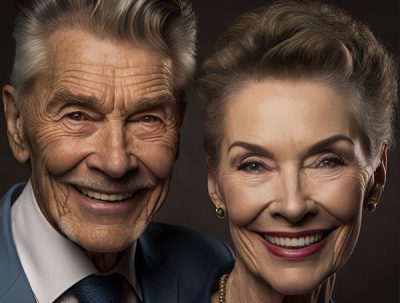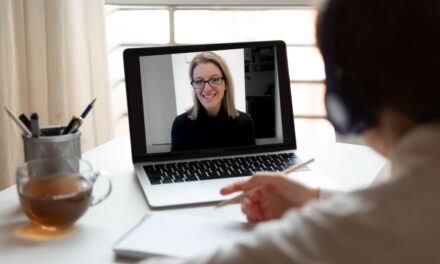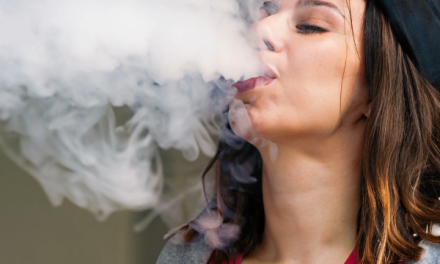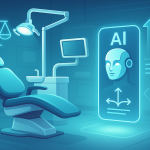In Australia, the ageing population has led to a growing demand for dental care. A combination of increased longevity and factors such as the higher prevalence of systemic diseases, medications, and decreased interest or ability in performing oral hygiene practices are contributing to this trend. Meanwhile, the World Health Organization (WHO) aims for improved and universal oral healthcare and supports the goal of each person to retain more than 20 teeth at age 80.
This article examines how the ageing Australian population affects the type of dental care required now and in the future, and highlights areas that will need more education, skill development and resources to meet increasing demand.
Changing demographics affecting dentistry
A combination of factors such as increasing life expectancy and decreasing birth rates has led to an increase in the proportion of older adults (65+ years) in the population to 15% in 2020. This is double the percentage of 1970, and it is predicted that by 2066 older people in Australia will constitute 22% of the population.
Of older adults, 53% are women, with more than twice the proportion of the population aged 85+ being women.
Dental issues among the elderly in Australia
Oral health issues faced by older people are examined below:
1. Gradual tooth loss
Older adults are more likely than younger people to have lost some of their natural teeth, either due to decay, gum disease or injury. This can lead to a need for dentures, bridges or dental implants. Gradual loss of teeth occurs incrementally throughout adult life. It is the major oral problem among older people, in contrast with and edentulism (below). Some argue that the unplanned, crisis-driven and incremental loss of teeth presents more of a problem for the profession and the public. This is because the piecemeal loss of teeth can result in the drifting of adjacent teeth and the over-eruption of opposing units, thus complicating prosthodontic rehabilitation at a later date. Exacerbating this, the annual dental caries increase among older people in nursing homes is more than double that observed among their community-dwelling counterparts; and among those with dementia, it is more than twice as high again.
2. Loss of all natural teeth (edentulism)
According to the Australian Institute of Health and Welfare (AIHW) (2018), around 33% of adults aged 65 and over had lost all their natural teeth (edentulism).
3. Dry mouth (xerostomia)
As people age, salivary glands may produce less saliva, which can lead to dry mouth. Also a common complication of some medications, this can make it harder to keep the mouth clean and healthy. It can also increase the risk of tooth decay, infection and reduction in quality of life. One in 5 older people suffer from this according to the American Geriatrics Society (2017).
4. Root decay
As people age, the roots of their teeth may become exposed, making them more susceptible to decay. According to a study published in the Journal of the American Dental Association, around 35% of older adults have root decay (2002).
5. Gum disease
As people age, they may be more likely to develop gum disease. According to the AIHW (2018), around 40% of adults aged 65 and over had moderate or severe gum disease.
6. Oral cancer
Older adults have a higher risk of oral precancer (generally refers to leukoplakia, lichen planus and erythroplakia, conditions with recognised potential for malignant transformation) and oral cancer (usually refers to oral squamous cell carcinoma). According to Cancer Council Australia (2020), oral cancer is more common in older adults, with around 75% of cases diagnosed in people over the age of 50.
7. Tooth sensitivity
As people age, their teeth may become more sensitive to hot, cold or sweet foods and drinks. According to a study published in the Journal of the American Dental Association (2002), around 40% of older adults have tooth sensitivity.
8. Bruxism (teeth grinding)
Older adults may experience bruxism, which can cause tooth wear, damage to the temporomandibular joint (TMJ), and headaches. According to a study published in the Journal of Oral Rehabilitation, around 8% of older adults experience bruxism.
9. Oral candidiasis
Older adults may be more susceptible to oral thrush, which is a fungal infection caused by the overgrowth of Candida yeast. According to a study published in the Journal of the American Geriatrics Society, around 5% of older adults experience oral thrush.
10. Dental phobia
Older adults may develop dental phobia. This can make it difficult to get the dental care they need to maintain good oral health, and may inhibit regular checkups taking place. According to a study published in the Journal of the American Dental Association, around 8% of older adults have dental phobia.
11. Impaired physical and cognitive function
Older adults may have difficulty sitting in a dental chair, opening their mouth wide, or understanding instructions, this can make it difficult for them to receive dental care. According to Dementia Australia, around 47% of people aged 85 and over have dementia. Also, according to the Australian Bureau of Statistics, around 30% of people aged 65 and over have a limitation in their ability to perform core activities of daily living.
Together with an ageing population comes a responsibility for ‘healthy’ and ‘successful’ ageing. So how will Australian dentists achieve these aims when an ageing population means an increased demand for dental care?
In conclusion, the steady increases in the population of older people—together with increases in tooth retention into old age—pose particular challenges for the oral care system. The dental profession will have to be equipped to meet the dual challenges of treating and preventing the disease in this group. There is a need to identify, develop and test innovative approaches to catering for older peoples’ dental health needs.
Sources
1. Older Australians, Demographic profile. (n.d.-b). Australian Institute of Health and Welfare. Retrieved January 11, 2023, from https://www.aihw.gov.au/reports/older-people/older-australians/contents/demographic-profile
2. Kanasi, E., Ayilavarapu, S., & Jones, J. (n.d.). The aging population: Demographics and the biology of aging. Periodontology 2000, 72(1), 13–18. https://doi.org/10.1111/prd.12126
3. An ageing population poses dental challenges. (n.d.). Singapore Dental Journal, 35, 3–8. https://doi.org/10.1016/j.sdj.2014.10.001
General: Lamster, I. B. (n.d.). Geriatric periodontology: How the need to care for the aging population can influence the future of the dental profession. Periodontology 2000, 72(1), 7–12. https://doi.org/10.1111/prd.12157
Author
Michelle Mason
m.r.mason04@gmail.com












